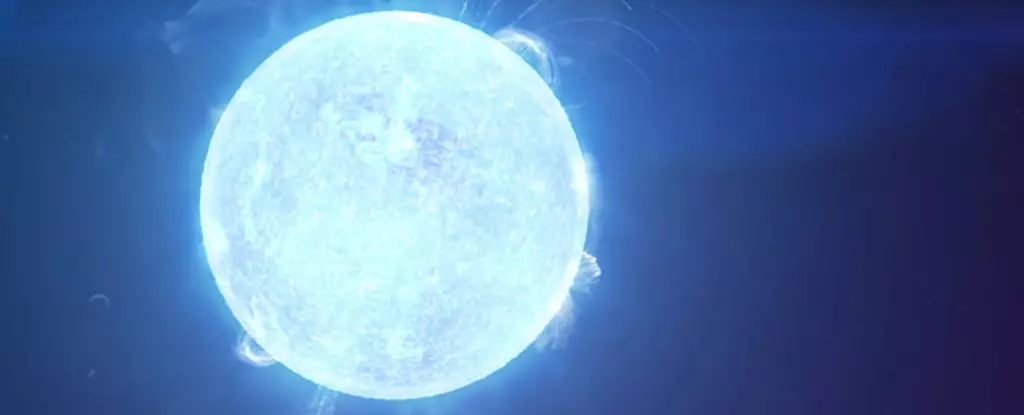Neutron stars, the remnants of large stars, are fascinating astronomical objects that have long puzzled scientists. Atoms, the building blocks of matter, consist of protons, neutrons, and electrons. While electrons are fundamental particles, protons and neutrons are composite particles made up of up and down quarks. Protons contain two ups and one down quark, while neutrons have two downs and one up quark.
According to the simple model of a neutron star, its core is filled with tightly bound neutrons on the brink of collapsing in on themselves due to gravity. In this state, the quarks within the neutrons are unable to break apart. However, some researchers have proposed that at the edge of this gravitational collapse, the quarks may loosen up, allowing them to flow together and form a quark “soup” within the neutron star’s core.
Although we cannot directly experiment on neutron stars or recreate their dense nuclear matter on Earth, scientists can gather insights into their behavior through the equation of state. The Tolman-Oppenheimer-Volkoff (TOV) equation is a complex mathematical model that calculates the bulk properties of neutron stars. However, when applying the TOV equation to determine if neutron stars have a quark core, the answer remains uncertain.
In a recent study published in Nature Communications, scientists took a different approach. Instead of relying solely on the equation of state, they used observational data on the mass and size of neutron stars and applied Bayesian statistics. This statistical method analyzes patterns of observation and extrapolates likely scenarios in a subtle but powerful way.
In this study, the research team found that neutron stars with masses greater than two Suns had an 80-90 percent likelihood of having quark cores. By comparing neutron stars with and without quark cores, a shift in the mass-density relation could be identified through Bayesian analysis. This indicates that some neutron stars are likely to possess quark cores, raising the question of where the transition point between quark stars and regular neutron stars lies.
However, it is important to note that this analysis relied on a relatively small data sample. Currently, the mass and radius of most neutron stars remain unknown. As more data becomes available, researchers will have a clearer understanding of the critical phase shift between quark matter and dense neutron matter.
While our knowledge of neutron stars is still incomplete, it is evident that these celestial objects hold remarkable secrets. The possibility of quark cores challenges our understanding of their internal structure and behavior.
As technology advances and more astronomical observations are made, the mysteries surrounding neutron stars will gradually be unraveled. With each new data point, scientists move closer to answering crucial questions about the composition and behavior of these enigmatic objects.
For now, we can surmise that some neutron stars are far stranger than we ever imagined. The inclusion of quark cores within their cores adds a fascinating layer of complexity to our understanding of the universe.


Leave a Reply